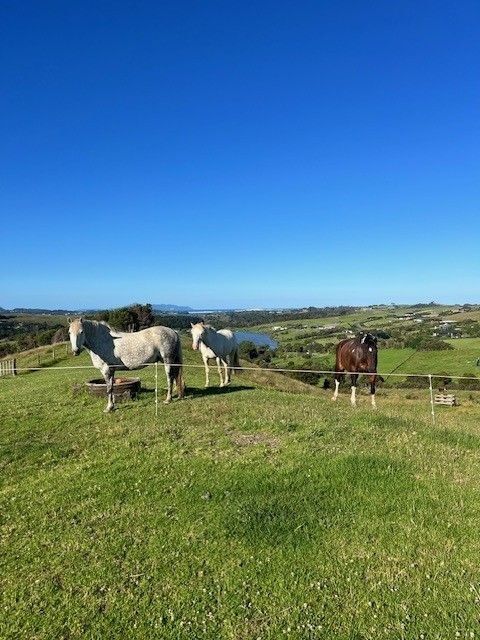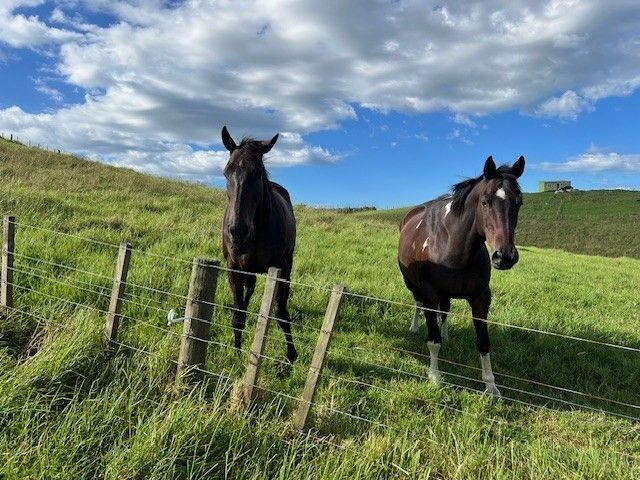Grazing and Safe Paddocking
Providing a safe, well-managed environment for your horse is just as important as proper nutrition and hoof care. Horses thrive in open spaces with appropriate companionship, safe fencing, and well-maintained pastures. This guide outlines key considerations for ensuring your horse’s paddock is both safe and sustainable.

Space Requirements for Horses
Horses require adequate space to move freely, graze, and socialise. The general guideline for grazing space is:
At least 1.5-2 acres per horse for proper pasture rotation and forage availability.
Smaller paddocks may require supplemental feeding and additional management to prevent overgrazing.
Horses are Herd Animals
Horses are highly social creatures and should not be kept alone. Providing companionship helps reduce stress, prevents behavioural issues, and promotes overall well-being. Even if the companion is over the fence and not in the same paddock, companionship is still incredibly important for your horses wellbeing. If another horse is not available, alternative companions such as goats or donkeys may help meet their social needs, however another horse or pony is still the preferred solution.
Safe Fencing for Horses
Choosing the right fencing is critical for preventing injuries and escapes. Key considerations include:
Avoid barbed wire, as it can cause severe injuries.
Electric fencing can be effective when set up properly but should be highly visible.
Post and rail fencing is a safe and sturdy option, but some horses like to have a chew so outriggers will help protect from this.
Equifence is an ideal solution, highly visible and safe fencing that can be electrified.
Fencing should be at least 1.2m (4ft) high for most horses, higher for large breeds or jumpers.
Fencing should be well-maintained, kept strained tight and checked regularly for damage. It should also be kept grass and weed-free, as many NZ grasses can overtake a fence easily.
Pasture Management & Rotational Grazing
Proper pasture management ensures your horses have access to nutritious forage and reduces the risk of overgrazing.
Rotate grazing areas to allow pastures to recover and regrow.
Avoid overgrazing, as it depletes nutrients and increases the risk of weeds taking over.
Manage manure carefully in your chosen method.
If space is limited, consider sacrifice paddocks or dry lots to preserve main grazing areas.
Manure & Parasite Management
Manure management is crucial for pasture health, particularly in smaller paddocks.
Regularly remove manure in smaller paddocks to reduce parasite load and improve soil quality.
Composting manure can create nutrient-rich fertiliser for pasture improvement.
Avoid manure build-up in high-traffic areas like water troughs and gates.
Harrowing or poo kicking/spreading can be useful for manure management and nutrient recycling, but in New Zealand it should only be done in hot, dry conditions when parasites are less likely to survive, and paddocks must be rested for a minimum of six weeks before horses return to grazing.
Cross-grazing with cattle or sheep helps reduce parasite burdens in horses, as worms specific to horses cannot complete their lifecycle in other grazing species.
Shelter & Weather Protection
Providing shelter is essential to protect horses from extreme weather conditions.
Natural shelter such as trees and hedges can offer some protection from wind and sun.
Where natural shelter isn't available, constructed shelters can be a good option. Constructed shelters should:
Be at least 3-sided with a roof to block wind and rain.
Have good drainage to prevent muddy conditions.
Be large enough to accommodate multiple horses comfortably and avoid potential arguments between horses.
Fresh Water Availability
Horses must have access to fresh, clean water at all times.
Automatic waterers can be a great option but must be checked daily.
Large troughs should be cleaned regularly to prevent algae build-up. Some algae can be toxic to horses.
In winter, ensure water does not freeze, and in summer, if possible, provide cool water to encourage drinking.
Hazard Prevention in Paddocks
Inspect paddocks regularly for hazards that could injure your horse:
Remove poisonous plants (e.g., ragwort, nightshade, and buttercups).
Check fencing for broken posts or loose wires.
Avoid clutter like old machinery, rubbish, or exposed nails.
Keep gates secure to prevent escape.
It is good practice to always walk the fence line of a paddock before every time you move horses into it - you never know what might have changed since last time you checked.
NZ vs Overseas Horse Keeping Practices
In New Zealand, most horses are turned out 24/7 with access to large paddocks, whereas in some other countries, particularly in Europe and North America, many horses are stabled for part or all of the day. While stabling has its benefits (such as protecting high-performance horses from harsh weather), turnout remains essential for physical and mental health.
A well-managed paddock ensures your horse remains happy, healthy, and safe. By providing adequate space, safe fencing, proper pasture management, and essential resources such as shelter and water, you can create an ideal environment that supports your horse’s natural behaviours and overall well-being.
Note: This information is intended as a general guide. Always consult with a professional for advice tailored to your horse's individual needs.

If you need more support and would like assistance from a qualified professional, we are here to help. The Rodney Animal Rescue Education Fund is available to help new horse owners, particularly those who have taken on an Off-the-track-Thoroughbred, and feel they are out of their depth or need assistance to ensure your new equine friend has all their needs met.
Learn more about the RAR Education Fund!
